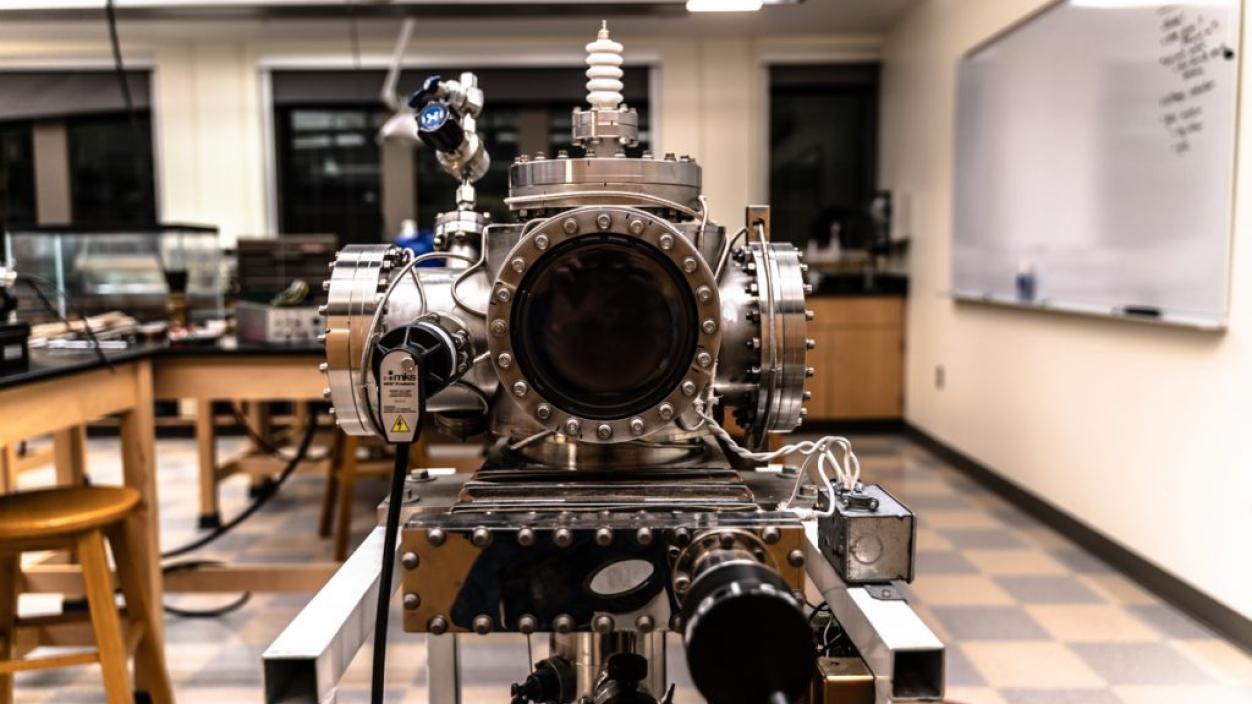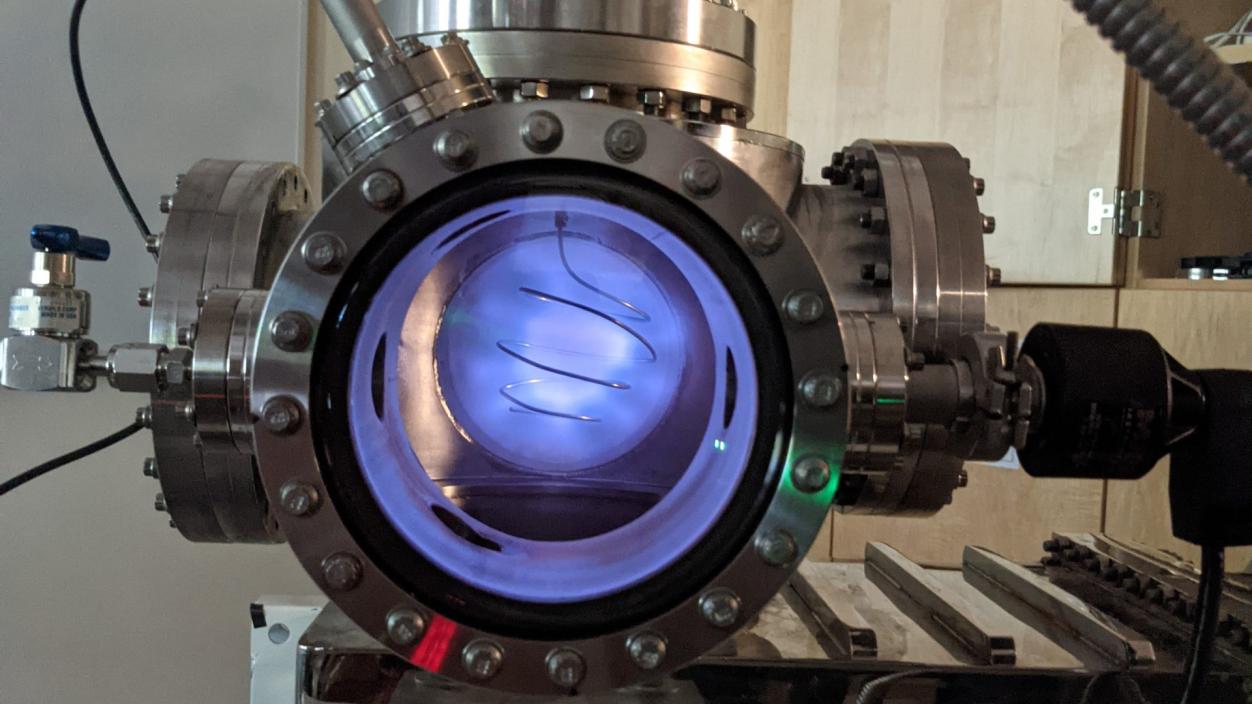
By Jonny Eberle.
When Ella Slattery ’25 went on a tour of University of Puget Sound’s physics department during her first few weeks on campus as a first-year student, the last thing she expected to see was a nuclear fusion reactor. She remembers being intrigued as she peered through a tiny window on the side of a small, silvery chamber connected to a mass of wires to catch a glimpse of the reaction occurring inside. Brett Klaassen, the postgraduate researcher who built the device, invited her to help with the project.
Slattery found time each week between her busy class schedule and her concert band commitments to help to fine-tune and test the machine. She volunteered, alongside Klaasen and Amory Arado ’24, to build on the work of students who’d been involved in previous years to get the reactor up and running.
“The first time we produced plasma was mind-blowing,” Slattery says. “To see all of the colors we were able to create with different currents of this plasma that’s exactly like what’s produced in stars—and we were able to recreate it in this tiny little tube. I don’t think I’ll ever get over it.”
The biggest challenge Slattery and the team faced was figuring out how to get a high enough voltage to produce neutrons without creating electrical arcing. The team experimented with different insulators and ceramics to contain the current and get the reactor to operate smoothly. Once the students worked out some of the bugs, they were able to slowly increase the amount of power going into the reactor, eventually pumping 30 kilovolts into the chamber. The tabletop reactor isn’t very efficient and uses more electricity than it can generate from the collision and fusion of particles, making it less than ideal as a power source. With an input of 30 kilovolts, it is capable of producing roughly 5 kilovolts of energy from fusion—enough to power the appliances of a small household.

“In the main chamber of our reactor, we’re accelerating these atomic particles, and if we can get them moving fast enough, they smash together and actually fuse, releasing neutrons in the process,” Slattery explains. “There are a lot of potential applications if we can control the output of this device. We can use it in health care for neutron imaging, which is like an X-ray, except the amount of detail is much greater, and neutron capture therapy has already been used to treat certain cancers.”
Through her time working on the reactor, Slattery has sharpened her understanding of the physics that explain its inner workings and picked up practical lab skills, like how to solder electrical wires and operate a drill. That kind of hands-on, experiential learning is part of what drew her to Puget Sound in the first place. After completing her bachelor’s degree, she plans to get an engineering degree and work in the burgeoning field of environmentally friendly rocket design.

“I’ve always felt a calling toward math and science, but I also wanted a liberal arts experience so I could be as well rounded as possible. I want to have an understanding of the humanities so I can write and communicate effectively and not just have a purely science background.”
Slattery continues to volunteer her time tinkering with the fusion reactor this fall. Armed with a Geiger counter, she dreams of one day soon measuring the first neutrons produced within the fiery heart of the device and seeing all of the team’s hard work finally pay off.
